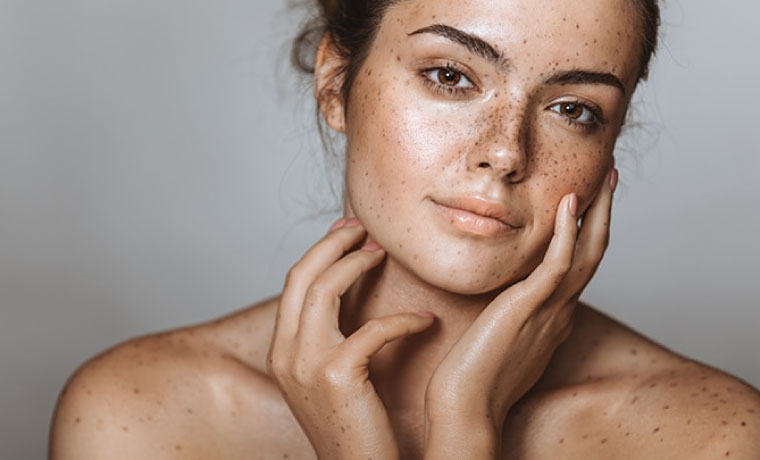When it comes to managing dermal pigmentation, a personalized approach is essential to achieving the best results. Given Dubai’s unique climate and diverse population, tailoring treatments to individual needs can significantly enhance effectiveness and overall satisfaction. Here’s a guide to personalizing your Dermal Pigmentation in Dubai.
1. Understanding Your Skin Type and Pigmentation
1.1 Skin Type Assessment
Different skin types react differently to various treatments. Identifying your skin type helps in choosing the most suitable treatment:
- Oily Skin: Prone to clogged pores and may respond well to treatments that control oil production.
- Dry Skin: Requires treatments that are hydrating and less aggressive to avoid exacerbating dryness.
- Sensitive Skin: Needs treatments that are gentle and avoid potential irritation.
1.2 Pigmentation Type
Understanding the type of pigmentation you have is crucial:
- Sunspots: Caused by prolonged sun exposure and usually present as localized dark spots.
- Melasma: Large patches often related to hormonal changes and may require more targeted treatments.
- Post-Inflammatory Hyperpigmentation (PIH): Results from skin trauma and requires treatments that address both pigmentation and skin healing.
2. Consultation with a Specialist
2.1 Choosing a Dermatologist
Consulting with a dermatologist or skincare specialist is the first step in personalizing your treatment:
- Expertise: Look for specialists with experience in treating pigmentation issues and a track record of successful outcomes.
- Consultation: During your consultation, discuss your skin concerns, medical history, and treatment goals.
2.2 Skin Evaluation
A thorough evaluation will help determine the most appropriate treatment plan:
- Visual Inspection: Assessing the extent and type of pigmentation.
- Medical History: Reviewing any underlying conditions or medications that might affect treatment.
3. Selecting the Right Treatment
3.1 Laser Therapy
3.1.1 Customization
Laser treatments can be tailored based on pigmentation type and skin sensitivity:
- Wavelength Selection: Different lasers target specific depths and types of pigmentation. For example, fractional lasers are effective for deeper pigmentation, while pico lasers target superficial spots.
- Intensity and Frequency: Adjusting the laser's intensity and the number of sessions based on skin response and pigmentation severity.
3.1.2 Post-Treatment Care
- Sun Protection: Essential for preventing further pigmentation and aiding recovery.
- Hydration: Keeping the skin moisturized to support healing.
3.2 Chemical Peels
3.2.1 Customization
Chemical peels can be customized based on the depth of pigmentation:
- Type of Peel: Superficial peels are suitable for light pigmentation, while medium and deep peels address more severe issues.
- Acid Concentration: Adjusting the concentration based on skin type and pigmentation depth.
3.2.2 Post-Treatment Care
- Avoiding Irritants: Use gentle skincare products to avoid further irritation.
- Moisturization: Essential for recovery and maintaining skin health.
3.3 Topical Treatments
3.3.1 Customization
Topical treatments can be personalized based on pigmentation type and skin condition:
- Ingredient Selection: Hydroquinone, retinoids, and Vitamin C are common, but the choice depends on skin tolerance and pigmentation severity.
- Application Regimen: Tailoring the frequency and concentration to suit individual needs.
3.3.2 Integration with Other Treatments
- Combination Therapy: Often used in conjunction with other treatments for enhanced results.
3.4 Microneedling
3.4.1 Customization
Microneedling can be adjusted based on skin type and pigmentation:
- Needle Depth: Adjusting the depth of needles to target specific layers of skin.
- Serum Selection: Using targeted serums to enhance treatment efficacy.
3.4.2 Post-Treatment Care
- Minimizing Redness: Using soothing products to calm the skin.
- Avoiding Sun Exposure: Critical for preventing further pigmentation.
3.5 Radiofrequency (RF) Therapy
3.5.1 Customization
RF therapy can be tailored based on skin type and treatment goals:
- Energy Settings: Adjusting the energy level based on skin thickness and pigmentation depth.
- Session Frequency: Determining the number of sessions needed based on individual response.
3.5.2 Post-Treatment Care
- Hydration: Keeping the skin hydrated to support healing.
- Sun Protection: Preventing new pigmentation from developing.
4. Lifestyle and Environmental Considerations
4.1 Sun Protection
Dubai’s intense sun exposure necessitates rigorous sun protection:
- Daily Sunscreen: Use a broad-spectrum sunscreen with SPF 30 or higher.
- Protective Clothing: Wear hats and sunglasses to shield your skin from UV rays.
4.2 Skincare Routine
Maintaining a consistent skincare routine can support treatment results:
- Gentle Products: Use non-irritating cleansers and moisturizers.
- Avoiding Harsh Treatments: Steer clear of products that could exacerbate pigmentation.
5. Monitoring and Adjusting Treatment
5.1 Regular Check-Ins
Regular follow-up appointments with your specialist are important:
- Assessing Progress: Monitoring the effectiveness of the treatment and making adjustments as needed.
- Addressing Concerns: Discuss any side effects or concerns with your specialist.
5.2 Adjusting Treatment Plans
Based on progress and response, your treatment plan may be adjusted:
- Changing Treatments: Switching or combining treatments for better results.
- Adjusting Frequency: Modifying the frequency of sessions based on skin response.
Conclusion
Personalizing your dermal pigmentation treatment in Dubai involves a thorough understanding of your skin type, pigmentation concerns, and the specific treatments available. By consulting with a specialized dermatologist, customizing your treatment plan, and considering lifestyle and environmental factors, you can effectively address pigmentation issues and achieve clearer, more even-toned skin. Regular monitoring and adjustments will ensure that your treatment remains effective and tailored to your evolving needs.






Comments